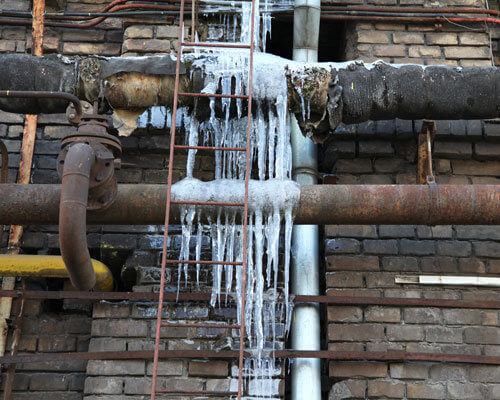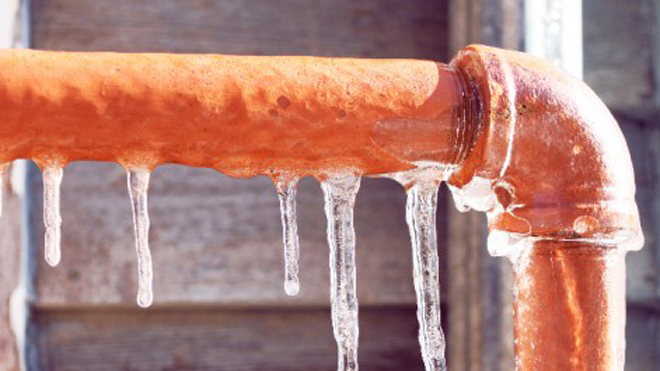What're your thoughts with regards to How to Prevent Your Pipes From Freezing?

Winter can ruin your pipes, especially by freezing pipes. Here's exactly how to avoid it from happening and what to do if it does.
Intro
As temperature levels drop, the threat of icy pipes increases, possibly bring about costly fixings and water damage. Understanding exactly how to prevent icy pipes is crucial for property owners in cold environments.
Recognizing Icy Pipelines
What causes pipelines to ice up?
Pipelines freeze when exposed to temperatures below 32 ° F (0 ° C) for prolonged durations. As water inside the pipelines freezes, it increases, taxing the pipeline walls and potentially triggering them to burst.
Dangers and damages
Icy pipes can result in supply of water disruptions, residential or commercial property damages, and expensive repairs. Burst pipes can flood homes and cause comprehensive structural damages.
Indications of Frozen Pipeline
Recognizing icy pipes early can prevent them from breaking.
Just how to determine icy pipes
Search for decreased water circulation from faucets, uncommon odors or sounds from pipes, and noticeable frost on revealed pipes.
Avoidance Tips
Protecting vulnerable pipelines
Wrap pipelines in insulation sleeves or utilize warmth tape to secure them from freezing temperature levels. Focus on pipelines in unheated or external areas of the home.
Home heating strategies
Keep indoor rooms effectively warmed, especially areas with pipes. Open up cabinet doors to permit warm air to circulate around pipes under sinks.
Safeguarding Exterior Pipes
Yard tubes and outdoor taps
Separate and drain pipes yard pipes prior to winter months. Mount frost-proof faucets or cover exterior taps with protected caps.
What to Do If Your Pipelines Freeze
Immediate activities to take
If you suspect icy pipelines, keep faucets open to relieve stress as the ice melts. Utilize a hairdryer or towels soaked in hot water to thaw pipelines slowly.
Long-Term Solutions
Architectural modifications
Think about rerouting pipelines away from exterior wall surfaces or unheated areas. Include extra insulation to attic rooms, cellars, and crawl spaces.
Updating insulation
Buy high-grade insulation for pipes, attic rooms, and walls. Appropriate insulation aids maintain constant temperatures and minimizes the threat of frozen pipes.
Conclusion
Protecting against icy pipelines requires aggressive actions and quick responses. By understanding the causes, indications, and safety nets, home owners can protect their pipes throughout winter.
5 Ways to Prevent Frozen Pipes
Drain Outdoor Faucets and Disconnect Hoses
First, close the shut-off valve that controls the flow of water in the pipe to your outdoor faucet. Then, head outside to disconnect and drain your hose and open the outdoor faucet to allow the water to completely drain out of the line. Turn off the faucet when done. Finally, head back to the shut-off valve and drain the remaining water inside the pipe into a bucket or container. Additionally, if you have a home irrigation system, you should consider hiring an expert to clear the system of water each year.
Insulate Pipes
One of the best and most cost-effective methods for preventing frozen water pipes is to wrap your pipes with insulation. This is especially important for areas in your home that aren’t exposed to heat, such as an attic. We suggest using foam sleeves, which can typically be found at your local hardware store.
Keep Heat Running at 65
Your pipes are located inside your walls, and the temperature there is much colder than the rest of the house. To prevent your pipes from freezing, The Insurance Information Institute suggests that you keep your home heated to at least 65 degrees, even when traveling. You may want to invest in smart devices that can keep an eye on the temperature in your home while you’re away.
Leave Water Dripping
Moving water — even a small trickle — can prevent ice from forming inside your pipes. When freezing temps are imminent, start a drip of water from all faucets that serve exposed pipes. Leaving a few faucets running will also help relieve pressure inside the pipes and help prevent a rupture if the water inside freezes.
Open Cupboard Doors
Warm your kitchen and bathroom pipes by opening cupboards and vanities. You should also leave your interior doors ajar to help warm air circulate evenly throughout your home.

We hope you liked our section about How to prepare your home plumbing for winter weather. Thanks so much for finding the time to read our posting. Do you know anybody else who is excited about the subject? Why not promote it. Thanks a lot for your time spent reading it.
Request An Estimate